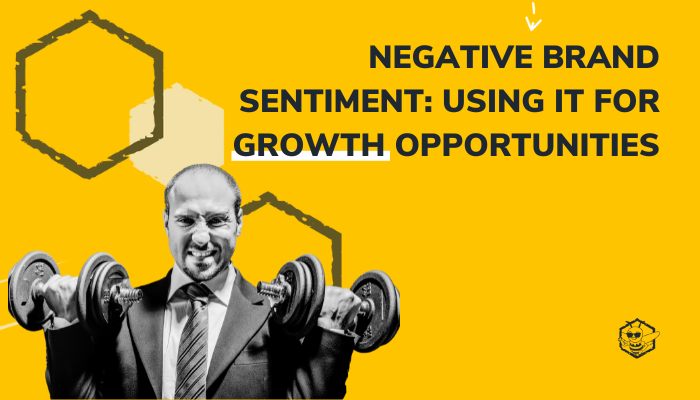No matter how successful businesses are, they will naturally experience their fair share of ups and downs. Brand owners and business stakeholders count on positive feedback and repeat customers to carry them through the lean times. However, it's how a business handles criticism and concerns that can determine future growth opportunities. It's not always easy to handle negative brand sentiment, but with a few well-chosen strategies and a growth mindset, your business can weather the storm and emerge more profitable than ever.
Table of Contents:
Understanding the Root Cause of Negative Brand Sentiment
Addressing Customer Concerns Head-On
Improving Products or Services Based on Feedback
Turning Critics into Advocates
Long-Term Strategies for Avoiding Negative Brand Sentiment
Understanding the Root Cause of Negative Brand Sentiment
Brand sentiment indicates how your ideal customer and the larger consumer base perceive your business. Ideally, your target customers will feel positive about your brand and react well if they hear a mention of or reference to your business. If, however, mention of your business inspires negative emotions or responses, it's time to take a closer look at what is causing these feelings in your customers.
To know how to address negative brand sentiment, you'll need to invest time and resources into understanding the root cause. Is it your product selection that might be falling short or are there larger issues with customer support or service? A brand sentiment analysis can help you get the full picture behind your brand sentiment and understand where your areas for improvement lie.
Addressing Customer Concerns Head-On
Even before you analyze negative brand sentiment, take time to address your customers' concerns head-on. Try to make them happy when they come to you with a complaint or concern, albeit indirectly. For example, if you see a customer leave a comment on your social media page that indicates dissatisfaction, have a member of your customer support team reach out to that customer for additional information. Actively resolving customer concerns shows that you care about their experience and are committed to turning a dissatisfied or unhappy customer into a happy one.
Addressing concerns proactively means you'll need to assign resources to serve customers. If your customer service team regularly feels overwhelmed by calls or messages, hire additional support to help them. Investing in customer support is an investment in the long-term success of your company. Even as you address customer concerns, you should investigate the issue so it doesn't happen again. After resolving the problem, contact customers who initially reached out to acknowledge their role in shaping your products and services.
Improving Products or Services Based on Feedback
Once you perform a negative brand sentiment analysis and figure out where you can focus resources for improvement, start implementing those changes. This could involve building a quality control team or meeting with product developers to establish a game plan. However, this will depend on the size of your organization and the available resources at your disposal. Whatever the scale of the changes you plan to make, keep your customers' feedback at the forefront. Don't rush these changes or improvements if you think they could compromise the quality of your products.
Turning Critics into Advocates
Communication can be the difference between former customers and current customers who recruit family and friends to your business. You can turn critics into advocates by sharing the positive changes you've made with customers who went out of their way to share feedback with you, by asking for their continued feedback, and by using their positive feedback in your marketing materials.
Testimonials from customers who have developed better brand sentiment surrounding your business can also be used to build case studies. These can serve as powerful marketing materials that can be showcased on your website and in email campaigns.
Long-Term Strategies for Avoiding Negative Brand Sentiment
Harness the momentum you've built and implement some long-term strategies for positive sentiment to continue producing satisfied customers. One way to turn negative brand sentiment into positive growth opportunities is by regularly soliciting feedback from customers. Surveys are an excellent way to get your finger on the pulse of your customer's pain points. These can help you understand exactly what they love about your business and what they think could use continued improvement.
Also, continuously monitor what current and former customers say about your business on social media. Save these comments in a shared file or document and look for patterns and trends regularly. Finally, consider trusting your negative brand sentiment analysis with a professional organization that can help you figure out what customers are saying about your brand. HIVE Strategy can help you connect with your audience on a human level, creating more satisfied customers and developing an effective marketing and lead generation strategy. Sign up for MarketingGrader.ai to analyze your brand sentiment and contact us today to learn more about our services!




.png?width=100&height=100&name=Why%20Were%20Not%20a%20Marketing%20Agency%20(And%20What%20That%20Means%20for%20Your%20Growth).png)
